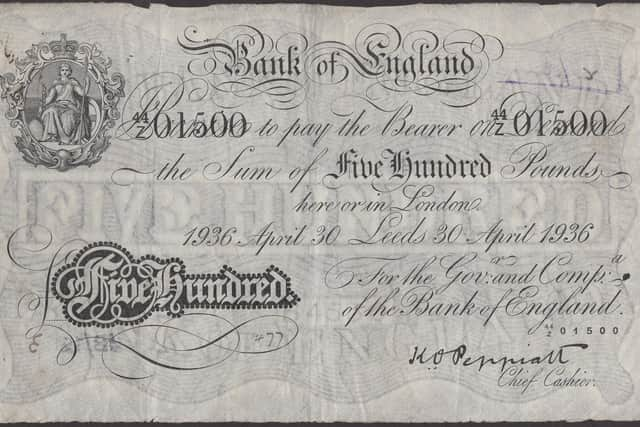'Extremely rare' £500 note from Leeds branch of Bank of England dating from 1936 to be auctioned
and live on Freeview channel 276
The bank note, which is signed by the then-Chief Cashier at the Bank of England Kenneth O. Peppiatt, is the first of its kind to ever be sold at auction and only the second one known to exist.
The note will be sold during a two day auction of bank notes by Noonans on March 1 and 2.
Advertisement
Hide AdAdvertisement
Hide AdAndrew Pattison, Head of Banknote Department at Noonans, said: “It is indeed a fantastic note. £500 notes are very rare, and in fact only available from three Bank of England branches - London, Liverpool and Leeds, although some were issued in Birmingham and Manchester none have ever come to light.


"Of those available, Leeds branch, like this one, are the rarest. It comes from a long-term collector and is only the second example ever to come to the open market.”
The sale will also include a set of notes from India, Britain and Ireland called the Bruce Smart Collection; the proceeds of which will be donated to an animal welfare organisation in the Unites States.
Elsewhere in the auction there is a large and diverse group of South African notes, including a rare £5 issued in the town of Koffyfontein during the Boer War, while the town was under siege. This is estimated to be worth between £8,000 and 10,000 and is said to be “the most difficult and certainly desirable Boer War note to find”, with only four other examples in private hands.
